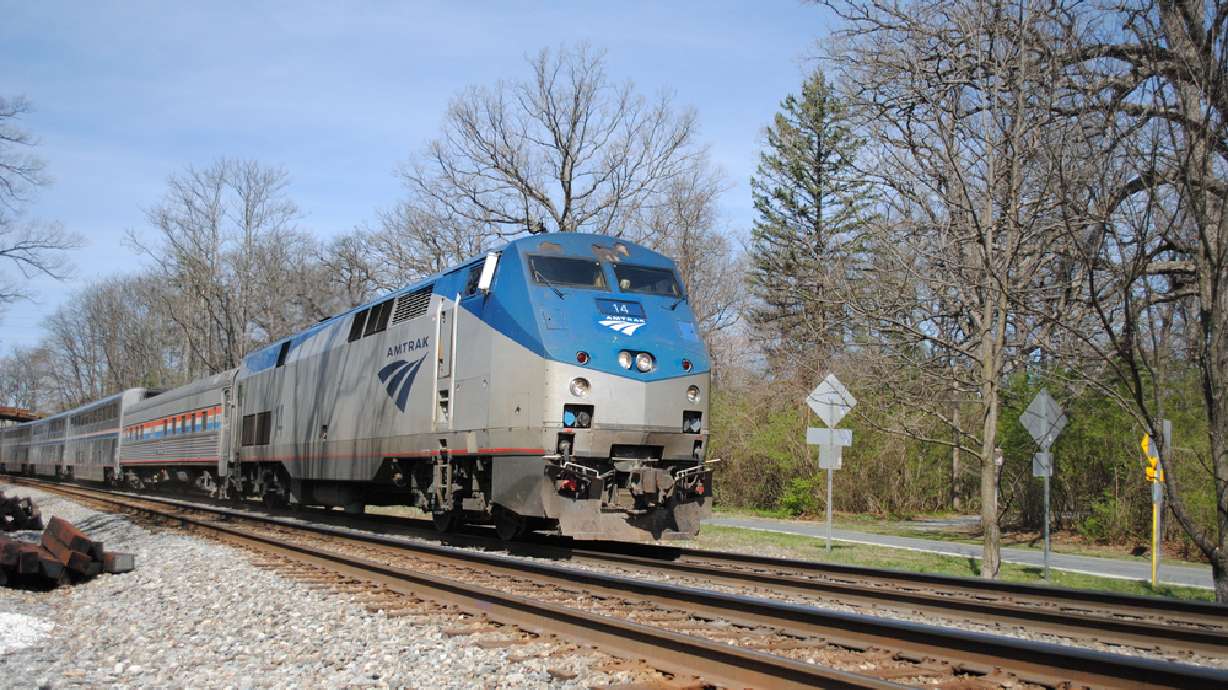Estimated read time: 4-5 minutes
This archived news story is available only for your personal, non-commercial use. Information in the story may be outdated or superseded by additional information. Reading or replaying the story in its archived form does not constitute a republication of the story.
SALT LAKE CITY — Amtrak only offers one route that crosses Utah right now, but Utah transportation officials say they are still interested in expanding options that would boost regional travel.
They're also interested in seeing if it's feasible to offer "high-level" statewide connections using commuter rail.
UDOT is getting ready to begin a statewide passenger rail feasibility study that will determine if the state should look into the idea further, Ben Huot, deputy director of planning and investment for the Utah Department of Transportation, told members of the Utah Legislature's Interim Transportation Committee on Wednesday.
The state study will explore new destinations and routes, evaluate high-speed and shared freight rail options, and review the costs and benefits of rail expansion. The process may create more corridor identification program opportunities, a program led by the Federal Railroad Administration.
It wouldn't be the first time Utah has reviewed the program. UDOT joined Idaho and Nevada transportation officials in an application to study a rail corridor that would run from Boise to Salt Lake City and then down to Las Vegas, potentially restoring Amtrak's old "Pioneer" and "Desert Wind" service routes.
It was not selected by the Federal Railroad Administration last year, but Utah transportation officials said earlier this year that they were open to retrying the study after it was discovered that Idaho had filed half of the application to the wrong federal program.
But while they did that, the Federal Railroad Administration launched its own study with Utah implications. Two of the agency's potential long-distance routes essentially overlap with what the three states wanted to study.
One route connects Denver to Seattle via Salt Lake City and Boise, while another connects Denver to Los Angeles via Wyoming, Salt Lake City and Las Vegas. Both could offer more commuter rail service to additional cities across the state along the routes.
As it stands, Amtrak's California Zephyr makes stops in Salt Lake City, Provo, Helper and Green River — usually in the middle of the night — as it connects San Francisco to Chicago.
Huot said the federal agencies offered some feedback on what could boost their chances of being selected for a study, including ridership projections, as well as other costs and other benefits.
"After we received that feedback, we did have some discussions with Amtrak and did get some very high-level, very preliminary … estimates for some of the data for those two routes," he said.
It's unclear if the project will receive funding a second time around.
Rio Grande Plan creates interest, pushback
In the meantime, the committee also heard from representatives of the Rio Grande Plan, a community-led initiative to bury a portion of the railroad tracks on Salt Lake City's west side.
The project has gotten preliminary support from Salt Lake City and Salt Lake County leaders, but it faced some pushback from the committee on Wednesday, largely because of the costs. A city study estimated it could cost $3 billion to $5 billion, but some ballpark estimates mentioned by the Legislature put it closer to $8 billion.
Rep. Karen Peterson, R-Clinton, said she appreciates the effort but is concerned that it will be "crazy expensive" and target a city with transit options while other communities along the Wasatch Front struggle to find any transit access.
"It feels like a lot in one place that doesn't benefit the whole system," she said.
Frederick Jenny, representing the group, said the group's goal is to have an official economic impact study from the state to explore fundraising options, such as federal grants. Others on the committee said they believe it's a big-picture idea that's at least worth studying.
"Not every project like this works," said Rep. Brett Garner, R-West Valley City. "Nobody wants to see a Big Dig; we want to see something like has happened in Denver. They've seen a broader vitalization of the area around their depot."
The committee didn't make any official motions tied to the presentation, so its future remains to be seen.










